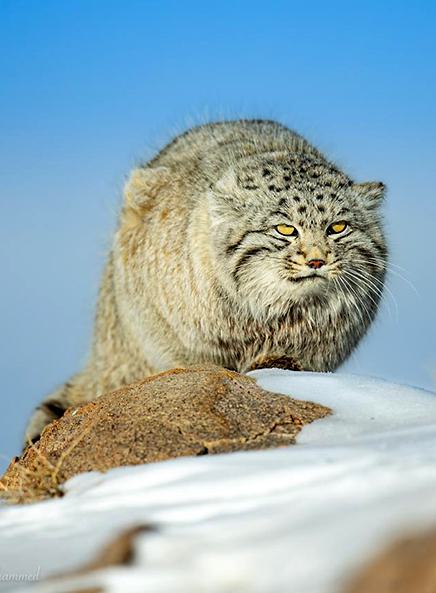Source: The Hindu (Pallas’s cat)
Pallas’s cat (Otocolobus manul), named after the German naturalist Peter Pallas, is a small, wild cat native to the grasslands and steppes of Central Asia.
Known for its thick fur and round, flat face, the Pallas’s cat is uniquely adapted to its environment. Despite its small size, its dense fur and stocky build give it the appearance of a larger animal.
Relevance for UPSC
(GS Paper III -Environment)
- Biodiversity conservation, Endangered species, and Climate change

Adaptations and Habitat of Pallas’s Cat
This species is nocturnal and thrives in cold, arid regions, blending seamlessly with its snowy or rocky habitat due to its white and greyish fur. Its camouflage is vital for hunting small prey like rodents and birds, which constitute its diet. Found in regions like Mongolia, Russia, and parts of the Himalayas, the Pallas’s cat is elusive and rarely sighted in the wild.
Conservation Concerns about Pallas’s Cat
Pallas’s cats face threats due to habitat degradation, hunting, and climate change. Their populations are declining.
IUCN Red List- “Near Threatened”
Conservation efforts must focus on preserving their habitats, minimizing human-wildlife conflict, and controlling poaching.
Other Unique Species of the Region
Pallas’s cat often shares its habitat with other iconic species like:
- Bactrian or Double-Humped Camel (Camelus bactrianus): Adapted to harsh desert climates, this camel is an important species in Central Asia.
- Przewalski’s Horse (Equus ferus przewalskii): Named after Russian geographer Nikolay Przewalski, this wild horse is a success story of reintroduction efforts after being extinct in the wild.


